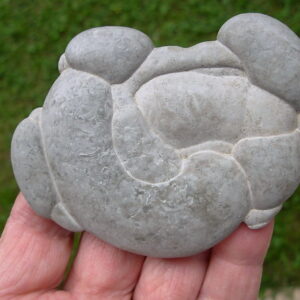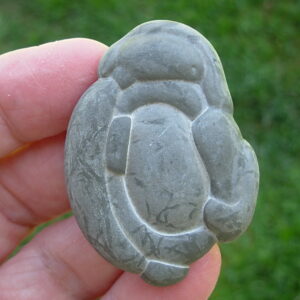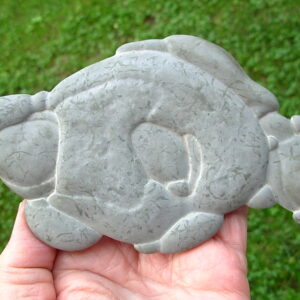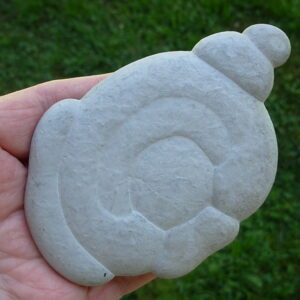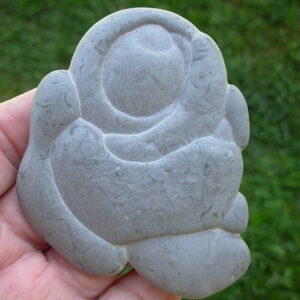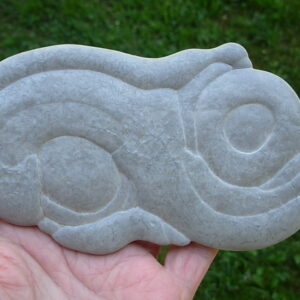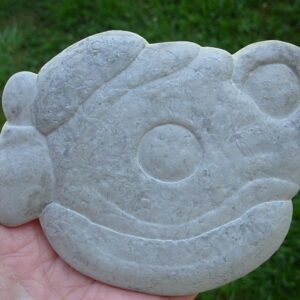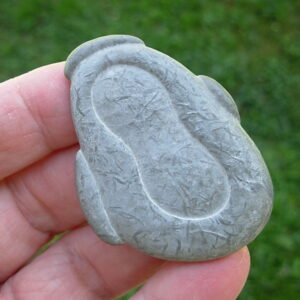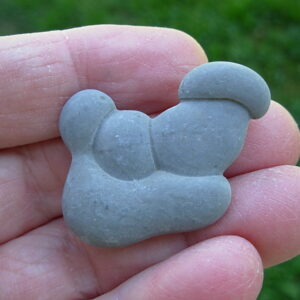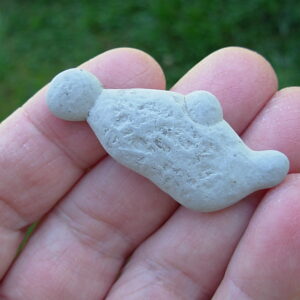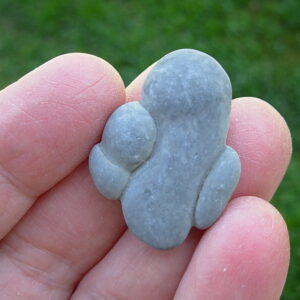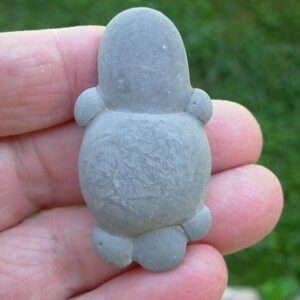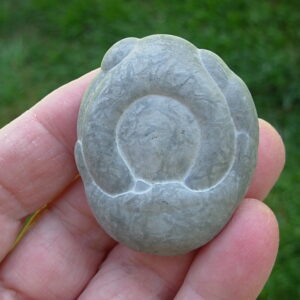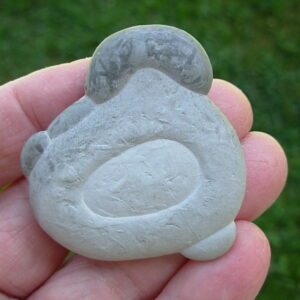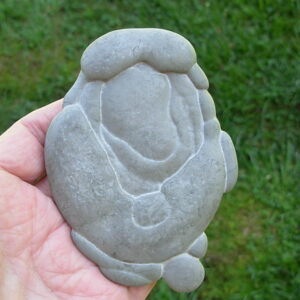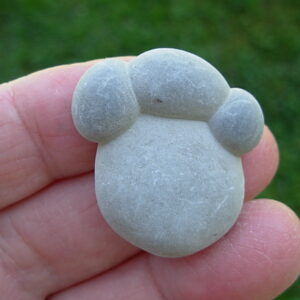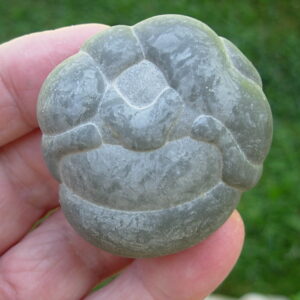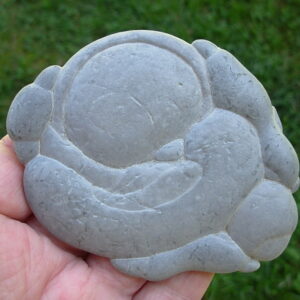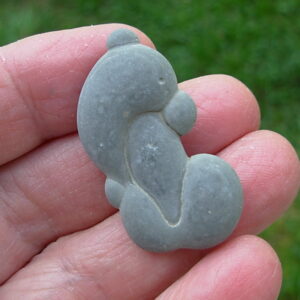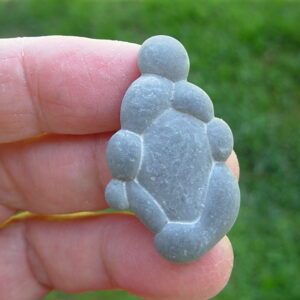Glacial Concretions
Our Suppliers for these wonderful Glacial Concretions... that we have sold for many years... have retired. However, we were able to make one last purchase from them. We once again have some more very fine concretions to offer our customers.
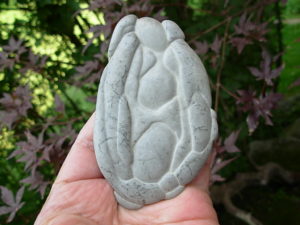 Clay stone glacial concretions are known by many names around the world. For example, they are called “Imatra Stones” in Finland, “Fairy Stones” in Scotland, Ireland and Quebec, and “Mud-babies” or “Clay Dogs” in Connecticut.
Clay stone glacial concretions are known by many names around the world. For example, they are called “Imatra Stones” in Finland, “Fairy Stones” in Scotland, Ireland and Quebec, and “Mud-babies” or “Clay Dogs” in Connecticut.
The stones we offer were picked on the shores of the Harricana River, Abitibi, Quebec, Canada, these pebbles have been formed thousands of years ago. They are made of fine sand and clay, solidified by nature. The originality and the forms of these stones are a phenomenon unique to Northern Quebec, especially on the bottom of the big Lakes with a glacier origin.
The superior face of the concretion is usually smooth and regular as for the interior face, it is often rough with puffed up spheres. The irregular lines on certain stones are caused by the traces left by miniature worms or organic remains which were fossilized thousands of years ago. As if the earth wanted to keep them in the memory...
The Algonquins called them “Fairy Stones” and often carried them as luck charms when they went on fishing or hunting expedition. The lovers offered the most beautiful “Fairy Stones” to their loved ones. The biggest specimens occupied a place of honor in their homes, or according to the legend, these stones assured a protection against the bad spirits. They also brought good health and prosperity to the occupants of the premises.
These “FAIRY STONES” are at the origin of the name “HARRICANA RIVER”. In fact, when the first ALGONQUINS come up the river towards Abitibi, a stop on these beaches made them realize the presence of these pebbles which for them, strangely looked like “BISCUITS”. This is the reason why they named the river “HARRICANA” which means: “RIVER OF THE BISCUITS” in the ALGONQUIN language.
These specimens are found in the soft deposits of the Quaternary where they were found in the ponds having occupied the depression of the retreat of the glacial front; subsequently they were carried by the water and deposited on the shores of the lakes and rivers.
Some Clay Concretions emerge from the ground but the majority of these stones are collected by digging the clay soil delicately in order to avoid any breaking or distortion and preserve their authenticity. Stones are different colors based upon their discovery location. Once found, the stones are cleaned and dried. A light coat of sealant is then applied to bring a sheen and prevent scratching.
This coating also prevents the natural oils in your fingers from discoloring the specimen. These can easily be returned to their uncoated natural state by soaking the specimen in 1 cup of warm water with 2 tablespoons of vinegar for 15 minutes. Brush the stone gently with a toothbrush, rinse well several times and dry. You now have the natural specimen.
-
Glacial Concretion 1 “Exciting”
$43.00 Add to cart -
Glacial Concretion 10 “Surrounded by Love”
$18.00 Read more -
Glacial Concretion 11 “Passion”
$57.00 Read more -
Glacial Concretion 12 “Explorer”
$43.00 Add to cart -
Glacial Concretion 13 “Beautiful One”
$39.00 Read more -
Glacial Concretion 14 “The Lovers” This specimen is ON RESERVE for J.L.
$69.00 Read more -
Glacial Concretion 15 “Happy Family”
$57.00 Read more -
Glacial Concretion 16 “Tread Softly”
$18.00 Read more -
Glacial Concretion 17 “Love Overflows”
$9.00 Read more -
Glacial Concretion 18 “Key to Love”
$9.00 Add to cart -
Glacial Concretion 19 “Hold Tight”
$9.00 Add to cart -
Glacial Concretion 2 “Little One”
$9.00 Add to cart -
Glacial Concretion 20 “Strong One”
$18.00 Add to cart -
Glacial Concretion 3 “Mountain High”
$18.00 Add to cart -
Glacial Concretion 4 “Admiration”
$43.00 Add to cart -
Glacial Concretion 5 “I Hear You”
$9.00 Add to cart -
Glacial Concretion 6 “Loving Arms”
$18.00 Read more -
Glacial Concretion 7 “Hold On”
$43.00 Add to cart -
Glacial Concretion 8 “Teddy Bear”
$9.00 Read more -
Glacial Concretion 9 “Family Cluster”
$9.00 Read more

